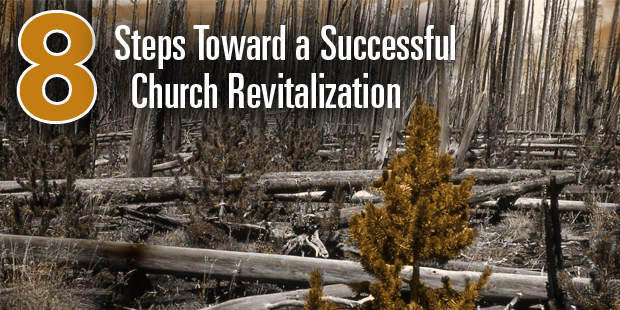
8 Steps Toward a Successful Church Revitalization
There is one type of church revitalization that is more successful than all others. The church closes its doors for a season, and then re-opens, usually with a new name and new leadership. I know this approach is not an option for most of you, so I gathered data from the “other” category. This category includes churches that kept the same name and, for the most part, the same leadership.
Keep in mind, this information is not a step-by-step guide to revitalization. We offer that resource periodically. Make certain you are on our email list, and we will let you know the next time that training opens.
As I gathered the information for successful revitalizations, I noted eight common characteristics that took place in most of the congregations. Unfortunately, many leaders are not willing to make all the sacrifices these characteristics suggest. Those who will make the sacrifices, however, are often seeing blessings beyond what they anticipated.
- The pastor formed an alliance of key influencers in the church. This group is not informal, nor is it closed to others. It begins when the pastor identifies those in the church whose voices are most effective in leading others toward change. I cannot remember a revitalization effort that succeeded without an alliance.
- The alliance of influencers recognized the need for church revitalization and made a commitment to pray for it daily. Please don’t let the last part of the preceding sentence escape your notice. Each of the influencers committed to daily prayer for revitalization. They realized it could not take place in their power alone.
- The leaders and a growing number in the congregation made a commitment to move the church to look more like the community. Such a commitment naturally involves an outward focus, because declining churches are not reaching all segments of their communities. The leadership within the church begins to look at the demographics of their community. They are willing to face reality on where the church is falling short.
- The church began to confront the issue of sacred cows. I know of one church that had a two-hour “town hall” meeting of the members of the congregation. The leaders made a list of every preference and church activity they could recall. For example, one of the items on the list was “11 am worship.” They then labeled each activity as either biblically essential, contextual, or traditional.
- The leadership began to work with the congregation to form a clear and compelling vision. One church, an all Anglo congregation, cast a vision to have 20 percent Hispanics in the worship attendance in one year because the community was 40 percent Hispanic. They did not reach 20 percent in year one, but they did in year two.
- The leadership communicated a sense of urgency. One of the simplest yet most powerful communications of urgency I’ve heard is: “We change or we die.” Too many congregations are choosing to die because of their unwillingness to change.
- The leadership, particularly the pastor, was willing to endure a season of intense criticism. This point is often where revitalization efforts end. The critics can get nasty, and the criticisms can become intense. Many people simply get mad at the idea of change.
- The leadership of the church was willing to let go of members. I have never known a successful revitalization effort where members did not leave. Few leaders like to see members leave, but some churches have a “back door revival” before true revitalization can take place.
Nine of ten churches are either declining or growing so slowly they are not keeping up with the growth of the community. Many churches are just a few years away from dying and closing. Revitalization is an urgent need.













